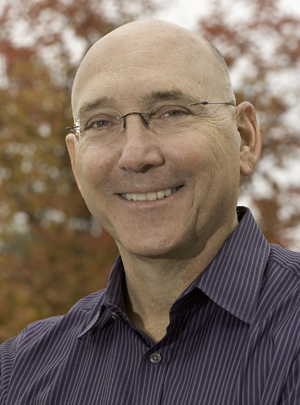June 17, 2008 - By Michelle Brandt

Douglas Owens
Although AIDS is often associated with younger adults, one in five patients was age 50 or older when their disease was diagnosed. Now, policy experts at the Veterans Affairs Palo Alto Health Care System, Stanford's School of Medicine, Duke University and St. Michael's Hospital in Toronto have shown that routine AIDS screening for older adults would be a relatively cost-effective way to increase life expectancy and decrease disease transmission.
Based on their findings, the researchers are recommending one-time voluntary screening for the AIDS virus, HIV, for most adults ages 55 to 64. Although screening is already recommended for all teens and adults, older patients may get overlooked.
'Screening patients with advanced age for HIV is economically attractive in many circumstances,' wrote Douglas Owens, MD, MS, an investigator at the VA-Palo Alto and professor of medicine with the Center for Primary Care and Outcomes Research and the Center for Health Policy in the Stanford Institute for International Studies. He is senior author of the paper published in the June 17 issue of Annals of Internal Medicine.
Owens and his colleagues showed in 2005 that screening for HIV is cost-effective for most adults, and the Centers for Disease Control currently recommends screening in patients aged 13 to 64. Owens said it's unclear how many, and which, patients are routinely tested, but he suspects older people are often missed.
'I think it's fair to say that most clinicians would be more likely to screen younger patients,' he said.
According to the researchers, the cost-effectiveness of screening depends on numerous factors, including the likelihood of increasing a patient's life with therapy and the likelihood of reducing HIV transmission. Before this study, there was some reason to believe that screening older adults might be less cost-effective than screening younger ones; one reason is that older patients face a higher risk of dying from other causes, which diminishes the absolute benefit of HIV therapy.
Owens worked with three colleagues - Mark Holodniy, MD, professor of infectious diseases at Stanford; first author Gillian Sanders, PhD, at Duke University, and Ahmed Bayoumi, MD, MSc, at the University of Toronto - to develop a decision model to estimate the health and economic effects of a program of voluntary HIV screening in older patients. They followed a group of patients over their lifetime and looked at the costs and health consequences of screening and counseling, HIV transmission and disease treatment.
They estimated the increase in survival that resulted from two different approaches to early identification of asymptomatic HIV and initiation of current standard treatment (highly active antiretroviral therapy). One was through a screening program, the other on the basis of case finding.
When the researchers worked on the assumption that 0.5 percent of patients were HIV-positive - a figure based on a past study - they found that HIV screening for a 65-year-old patient without a sexual partner would cost $55,440 per quality-adjusted life-year (a common statistical measurement that takes into account quality of life as well as length of survival). For a sexually active 65-year-old patient, it would cost $30,020.
Therapies costing around $50,000 or less per quality-adjusted life-year are generally considered cost-effective.
'We found that the cost-effectiveness of screening in patients ages 55 to 75 compares favorably with that of other interventions that are accepted as good uses of resources,' the researchers wrote. They added that the use of abbreviated counseling can make screening more cost-effective.
Along with their recommendation for one-time screening for adults aged 55 to 64, the group found that screening and abbreviated counseling can be cost-effective for sexually active people aged 65 to 75 if it can be shown the HIV prevalence is greater than 0.1 percent. Although there is limited evidence on the prevalence of HIV in older age groups, Owens said available data suggest that the prevalence is higher than 0.1 percent in some patient populations. The Centers for Disease Control provides guidelines for clinicians on how to determine a given population's prevalence.
While the main aim of the paper is to offer screening recommendations, Owens said he also hoped the study helps clinicians look at their patients in a different light. 'We're trying to point out [to doctors] that just because you have an older patient doesn't mean you shouldn't think about the possibility of HIV,' he said.
The study was funded by the Department of Veterans Affairs, the National Institute on Drug Abuse, the National Institute of Aging through the Stanford Center on the Demography and Economics of Health and Aging, and the Ontario HIV Treatment Network.
About Stanford Medicine
Stanford Medicine is an integrated academic health system comprising the Stanford School of Medicine and adult and pediatric health care delivery systems. Together, they harness the full potential of biomedicine through collaborative research, education and clinical care for patients. For more information, please visit med.stanford.edu.